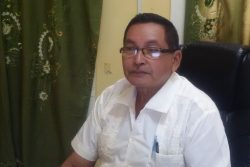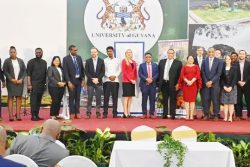Tourism can be described as local or international travel for the purpose of recreation, leisure, religious, cultural, family or business purposes, usually for a limited duration. Often many places of interest are visited during the period of travel, be it for dining, site seeing, heritage tours and for various other reasons. Developing, managing and promoting a country’s tourism product can be a challenging pursuit particularly when, in addition to the traditional features of a tourism product, there may also be small but unique places of interest spread over wide geographical areas.
Some of the challenges involved in marketing those places may include costs and time associated with updating maps; an absence of spatial on tourism facilities and destinations; the absence of a comprehensive and easily accessible information base; and the absence of a platform that can bring important aspects of the tourism product management together in one place.

Geographic Information Systems (GIS) can provide a dynamic spatial data library of tourism facilities with integrated graphical displays and audio/video clips of the location of tourism destinations with links to all relevant information on the tourism industry. Using GIS, a complex multidimensional model of tourism information can be developed and made available to stakeholders in the tourism industry.
Maps, reports and charts and tabular information are usually very useful in planning and analysing the effects of changes, looking for patterns and general decision making. Across the Caribbean it can be difficult to pull together all these sources of information for effective decision making. GIS has the capability to handle several kinds of information that have a location component. For example, hotels and tourist destinations all have one thing in common –location! A multitude of information can be associated with this location feature to present a complex multi-dimensional model of information.
On the Guyana Tourism Authority website ‘Destination Guyana’ is described as a paradise for nature lovers, adventure seekers and the eco-tourist alike, boasting an irresistible combination of fascinating and breath-taking natural beauty; pristine Amazonian rainforests; immense waterfalls;, amazing wildlife; blended with a vibrant indigenous culture, rich heritage and the most hospitable and friendly people in the world.
With GIS it is possible to represent all these hidden gems on a map to help tourists plan their trips ahead of getting to Guyana and seeing where different attractions are in relation to each other.
Recently, L&S Surveying from Trinidad and Tobago visited the St Georges Cathedral which was built in 1892 and is a national monument. They decided to scan the structure using 3D laser scanning, a non-contact measurement method used to quickly capture real world features – part of the data capture process used in GIS. Such a scan allows for precise documentation of the heritage site. It can be used for the creation of AS-built drawings which are useful for future restoration works or consultative review to assess the extent of restoration needed. They are also useful in creating 3D models which can be used for virtual tours online or incorporated in other online GIS applications or they can be printed in 3D and placed in museums or other heritage sites for viewing by tourists.
GIS provides benefits from two perspectives. First, there is the management of the tourism product utilising the graphical and analytical capability of GIS and second there is the marketing and promotion of the tourism product using web-based GIS technology presented over the internet
An information system that is capable of answering questions about where facilities and resources are located provides enormous benefits. An integrated GIS can provide intelligent mapping capabilities, analytical capabilities, modelling and prediction, and revenue generation features.
In Guyana, tourism resource mapping would allow stakeholders to conduct site suitability analyses thus finding the best location for a new hotel, restaurant or other attractions. Tourism-use maps can be used to evaluate land use, identify zones of conflict, and outline access points. Tourism capability maps can be used to monitor tourism resources that may be at risk due planning and other decisions.
“Guyana – South America Undiscovered, the destination of choice” is the slogan presented by the Guyana Tourism Authority. To realize this dream, GIS may be the missing link in the marketing and promotion endeavours.








